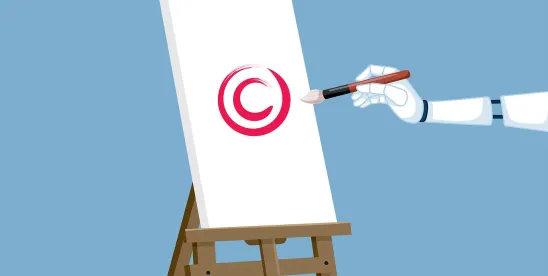Fair use — a critical defense in copyright law that allows limited use of copyrighted material without permission — has emerged as a key battleground in the wave of artificial intelligence (AI) copyright litigation. In a significant revision of his earlier position, Judge Stephanos Bibas in the United States District Court for the District of Delaware has dealt a blow to artificial intelligence companies by blocking their ability to rely on this defense in Thomson Reuters Enterprise Centre GmbH v. ROSS Intelligence Inc.
Fair use serves as a safety valve in copyright law, permitting uses of copyrighted works for purposes such as criticism, commentary, news reporting, teaching, scholarship, or research. Courts evaluate fair use through four factors, with particular emphasis on whether the use transforms the original work and how it affects the market for the copyrighted work.
The case originated when Thomson Reuters sued ROSS Intelligence for using content from Westlaw — the legal research platform’s headnotes and proprietary Key Number System — to train an AI-powered legal research competitor. ROSS had initially sought to license Westlaw content, but when Thomson Reuters refused, ROSS turned to a third-party company, LegalEase Solutions. LegalEase created approximately 25,000 legal question-and-answer pairs, allegedly derived from Westlaw’s copyrighted content, which ROSS then used to train its AI system.
In September 2023, Bibas denied Thomson Reuters’ motion for summary judgment on fair use, finding that the question was heavily fact-dependent and required jury determination. He particularly emphasized factual disputes about whether ROSS’s use was transformative and how it affected potential markets.
However, in August 2024, Bibas took the unusual step of continuing the scheduled trial and inviting renewed summary judgment briefing. His opinion represents a dramatic shift, explicitly acknowledging that his “prior opinion wrongly concluded that I had to send this factor to a jury.” While noting that fair use involves mixed questions of law and fact, Bibas recognized that the ultimate determination in this case “primarily involves legal work.”
Bibas’ unusual move to invite renewed briefing stemmed from his realization, upon deeper study of fair use doctrine, that his earlier ruling afforded too much weight to factual disputes and did not fully account for how courts should assess transformative use in AI-related cases. Rather than viewing transformation through the lens of whether ROSS created a novel product, Bibas recognized that the key question was whether ROSS’s use of Thomson Reuters’ content served substantially the same purpose as the original works.
He concluded that while fair use involves factual elements, the dispositive questions in the case were ultimately legal ones appropriate for resolution by the court. His key analytical shifts included rejecting the notion that ROSS’s use might be transformative merely because it created a “brand-new research platform.”
Critically, Bibas distinguished ROSS’s use from cases like Google v. Oracle where copying was necessary to access underlying functional elements. While Google needed to copy Java API code to enable interoperability between software programs, ROSS had no similar technical necessity to copy Westlaw’s headnotes and organizational system. ROSS could have developed its own legal summaries and classification scheme to train its AI — it simply found it more expedient to build upon Thomson Reuters’ existing work.
The concept of “transformative” use lies at the heart of the fair use analysis. This principle was recently examined by the Supreme Court in Andy Warhol Foundation for the Visual Arts, Inc. v. Goldsmith, where the Court significantly narrowed the scope of transformative use under the first fair use factor. The Court held that when two works serve “substantially the same purpose,” the fact that the second work may add “new expression, meaning, or message” is not enough to tip the first factor in favor of fair use.
This framework for analyzing transformative use provides important context for understanding how courts may evaluate AI companies’ fair use defenses. AI companies have consistently argued that their use of copyrighted materials for training data is transformative because the AI systems learn patterns and relationships from the works rather than reproducing their expressive content. They contend that this process fundamentally transforms the original works’ purpose and character. However, Bibas’ ruling suggests courts may be increasingly skeptical of such arguments, particularly when the resulting AI products compete in similar markets to the original works.
While this ruling represents a setback for one of the key defenses believed to be available to AI companies in copyright litigation, fair use is only one of several defenses these companies are raising in more than 30 pending lawsuits. Other defenses include arguments about copyrightability, substantial similarity, and whether training data uses constitute copying at all. A weakening of the fair use defense, while significant, does not necessarily predict the ultimate outcome of these cases.
Additionally, this case involved a particularly direct form of market competition — an AI system trained on legal content to compete with the original legal research platform. Other cases involving different types of training data or AI applications that don’t directly compete with the source materials might be distinguished. For instance, an AI trained on literary works to generate news articles might present a more compelling case for transformative use since the end product serves a fundamentally different purpose than the training data.
Nevertheless, Bibas’ ruling may alter how AI companies approach training data acquisition. If other courts follow his lead in viewing fair use primarily as a legal rather than factual determination, these companies may explore licensing agreements with copyright holders — a process that some have already undertaken.




 />i
/>i
